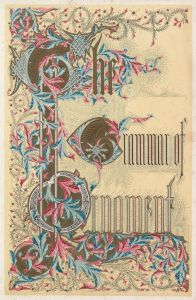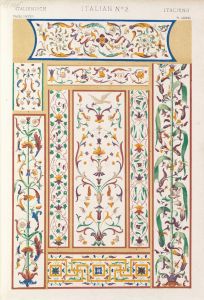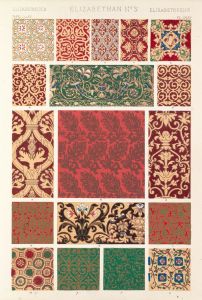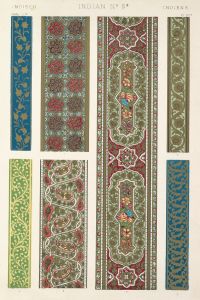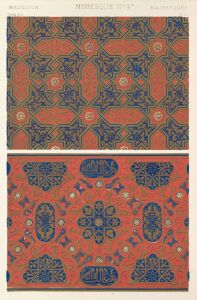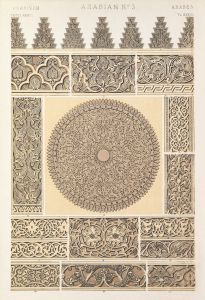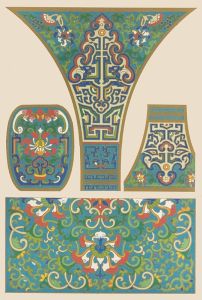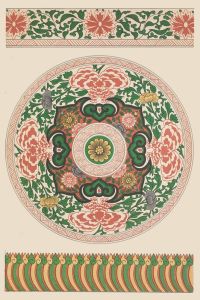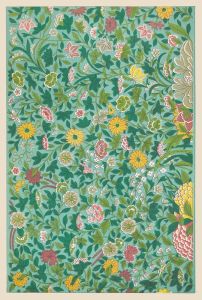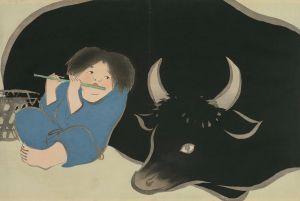
Examples of Chinese ornament, Pl.45
A hand-painted replica of Owen Jones’s masterpiece Examples of Chinese ornament, Pl.45, meticulously crafted by professional artists to capture the true essence of the original. Each piece is created with museum-quality canvas and rare mineral pigments, carefully painted by experienced artists with delicate brushstrokes and rich, layered colors to perfectly recreate the texture of the original artwork. Unlike machine-printed reproductions, this hand-painted version brings the painting to life, infused with the artist’s emotions and skill in every stroke. Whether for personal collection or home decoration, it instantly elevates the artistic atmosphere of any space.
"Examples of Chinese Ornament, Pl.45" is a work by Owen Jones, a prominent British architect and designer known for his contributions to the theory of design and his influential publication, "The Grammar of Ornament." Published in 1856, "The Grammar of Ornament" is a comprehensive collection of design patterns and motifs from various cultures around the world, intended to serve as a resource and inspiration for designers and architects of the time.
Owen Jones was a key figure in the 19th-century design reform movement, which sought to improve the quality of design in the decorative arts and architecture by studying and applying principles derived from historical and global sources. His work emphasized the importance of understanding and respecting the cultural context of design elements, while also encouraging innovation and adaptation.
"Examples of Chinese Ornament, Pl.45" is one of the many plates included in "The Grammar of Ornament." This particular plate showcases a selection of Chinese decorative motifs, reflecting the rich artistic traditions of China. The designs featured in this plate are characterized by their intricate patterns, harmonious compositions, and symbolic meanings, which are hallmarks of traditional Chinese art and design.
Chinese ornamentation has a long and storied history, deeply rooted in the country's cultural and philosophical traditions. The motifs often draw inspiration from nature, mythology, and symbolism, with common themes including dragons, phoenixes, clouds, and floral patterns. These elements are not only decorative but also carry significant cultural meanings, often associated with concepts such as prosperity, longevity, and harmony.
In "Examples of Chinese Ornament, Pl.45," Jones presents these motifs with a focus on their aesthetic qualities and design principles. The plate serves as an educational tool, illustrating the complexity and beauty of Chinese ornamentation. By including Chinese designs in his work, Jones acknowledged the global nature of design and the value of cross-cultural exchange in the arts.
Jones's "The Grammar of Ornament" was groundbreaking in its approach to design education. It provided a systematic study of ornamental art from different cultures, offering designers a wealth of visual references and encouraging them to explore and incorporate diverse influences into their work. The book's impact extended beyond its immediate audience, influencing generations of designers and contributing to the development of modern design theory.
"Examples of Chinese Ornament, Pl.45" is a testament to Owen Jones's commitment to celebrating and preserving the artistic heritage of different cultures. Through his work, he highlighted the importance of understanding the cultural significance of design elements and the potential for innovation through the integration of diverse artistic traditions. This plate, along with the rest of "The Grammar of Ornament," remains a valuable resource for those interested in the history of design and the enduring influence of traditional motifs in contemporary art and architecture.





